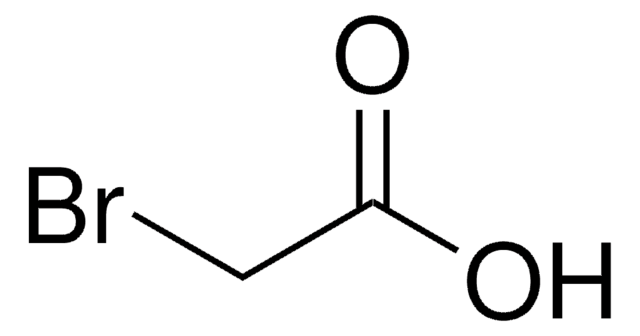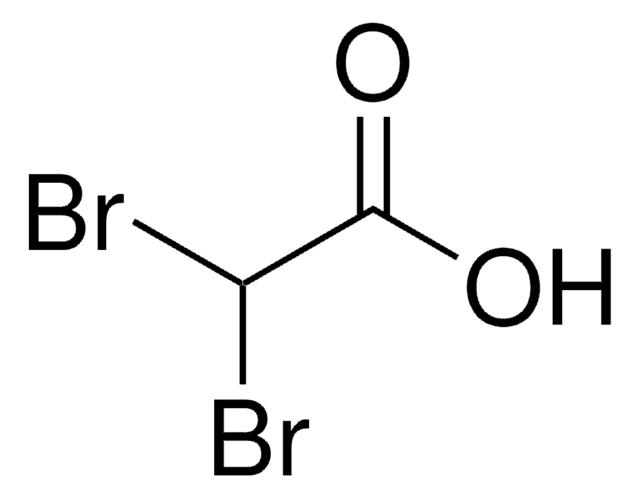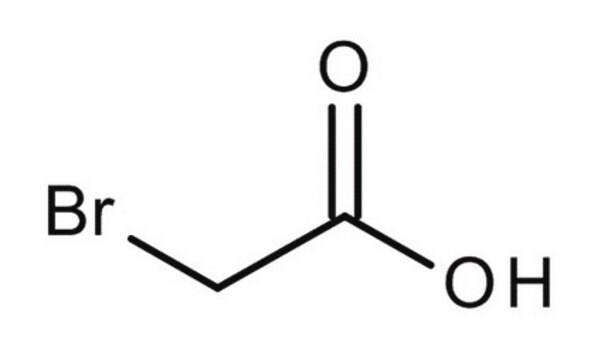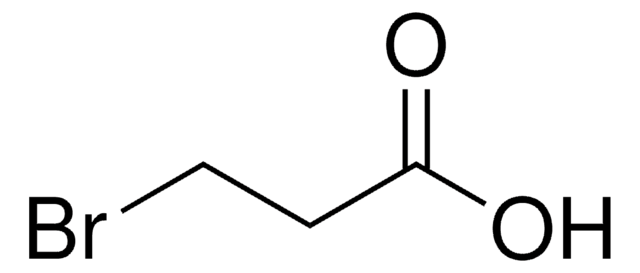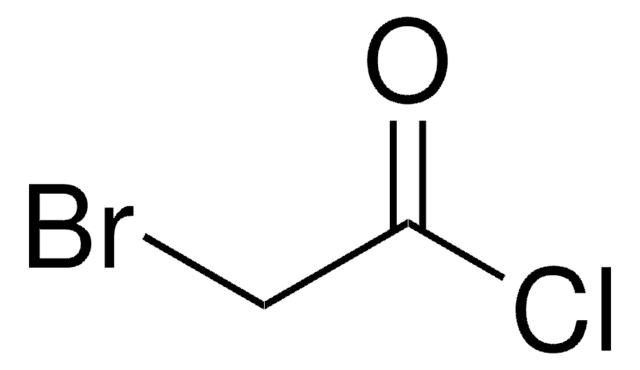おすすめの製品
グレード
reagent
品質水準
製品種目
ReagentPlus®
アッセイ
≥99.0% (GC)
≥99.0%
フォーム
solid
不純物
≤1% dibromoacetic acid (1H-NMR)
bp
208 °C (lit.)
mp
46-49 °C
47-49 °C (lit.)
溶解性
chloroform: 10%, clear, colorless
官能基
bromo
carboxylic acid
SMILES記法
NC(=O)C=C
OC(=O)CBr
InChI
1S/C2H3BrO2/c3-1-2(4)5/h1H2,(H,4,5)
InChI Key
KDPAWGWELVVRCH-UHFFFAOYSA-N
類似した製品をお探しですか? 訪問 製品比較ガイド
アプリケーション
また以下にも使用されます:
- (Z)-2-(シクロオクト-4-エン-1-イロキシ)酢酸の合成。
- Tα-ブロモ-フェニルアセトアミドの合成。
- 芳香族チオセミカルバゾンのチアゾリルヒドラゾンへの変換。
法的情報
シグナルワード
Danger
危険有害性の分類
Acute Tox. 2 Oral - Acute Tox. 3 Dermal - Acute Tox. 3 Inhalation - Aquatic Acute 1 - Eye Dam. 1 - Skin Corr. 1A - Skin Sens. 1
保管分類コード
6.1A - Combustible acute toxic Cat. 1 and 2 / very toxic hazardous materials
WGK
WGK 3
引火点(°F)
235.4 °F - closed cup
引火点(℃)
113 °C - closed cup
個人用保護具 (PPE)
Eyeshields, Faceshields, Gloves, type P3 (EN 143) respirator cartridges
適用法令
試験研究用途を考慮した関連法令を主に挙げております。化学物質以外については、一部の情報のみ提供しています。 製品を安全かつ合法的に使用することは、使用者の義務です。最新情報により修正される場合があります。WEBの反映には時間を要することがあるため、適宜SDSをご参照ください。
労働安全衛生法名称等を表示すべき危険物及び有害物
名称等を表示すべき危険物及び有害物
労働安全衛生法名称等を通知すべき危険物及び有害物
名称等を通知すべき危険物及び有害物
Jan Code
17000-500G:
17000-25G:
17000-RSAMPLE:
17000-INTR:
17000-VAR:
17000-BULK:
17000-100G:
この製品を見ている人はこちらもチェック
ライフサイエンス、有機合成、材料科学、クロマトグラフィー、分析など、あらゆる分野の研究に経験のあるメンバーがおります。.
製品に関するお問い合わせはこちら(テクニカルサービス)